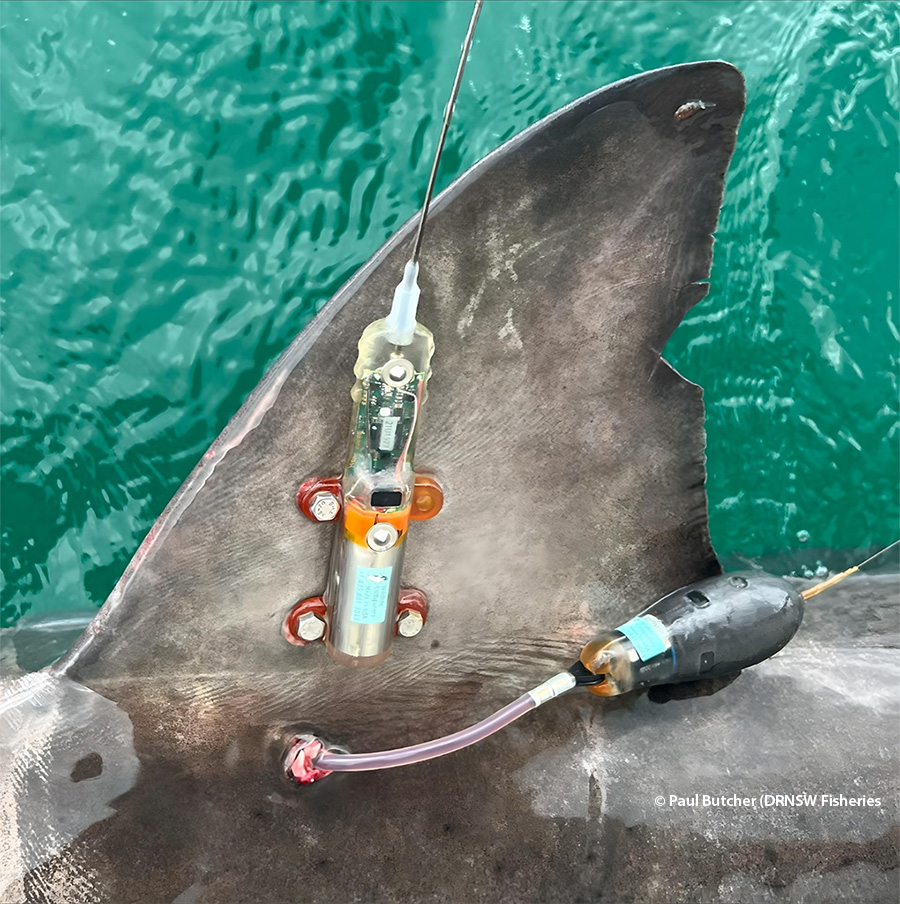
26 Apr Transforming Marine Animal Tracking with microPAT
New technologies are constantly emerging in marine biology to aid research and conservation efforts. We are excited to introduce our latest innovation, the microPAT, a compact satellite pop-up tag designed for tracking the behavior and location of small marine animals that do not come to the surface.
The microPAT is a satellite pop-up archival tag that allows researchers to track the behavior and migration of small marine animals. It is the smallest geolocating pop-up tag at just 46 grams and 96 x 33 mm. This makes it ideal for tagging smaller species and younger age classes that have not been tracked before.
The microPAT collects depth, temperature, wet/dry, and light-level data throughout the deployment, and archives them in the onboard memory. On a preset date or duration, the tag releases from the animal and floats to the surface, where it processes and summarizes the archived data to be transmitted via the Argos satellite system. The summarized data include empirical cumulative distributions (ECD) of depth, the temperatures at those depths, limited time-series data from the end of the deployment, and light data to derive location estimates. ECD data provide insights into an animal’s habitat preference and vertical movement patterns.
During field trials, the microPAT was put through its paces. Tags were released on 17 species—athletic fish like tunas and mahi, sharks, crabs, and eels—with great results. Deployment durations reached the maximum programmed duration of 365 days on multiple deployments.
Nearly complete data records were received from the tags that transmitted, except for a few tags that washed ashore. We also conducted studies to verify the data collection and light-based geolocation with deployments on drifters, fixed buoys, and a glider.
Below are examples of the novel ECD data product showing the minimum and maximum depths and the depths above which the animal spent 25, 50, and 75% of its time during six-hour summary periods. The profile data are color-coded showing the temperatures reported for each depth.


One useful feature of the microPAT is that the start time of the 6-hour data summary periods can be shifted to align them to local noon and midnight to study diurnal or crepuscular behavior.
Collin Williams, PhD Candidate in Marine Science, Kaust said, “We love these things. The microPAT opens a whole new range of smaller species to tag and we had some successful deployments last fall. We even tagged some species for the first time!”
Key benefits of the microPAT include:
- The smallest pop-up tag available for tracking small epipelagic fish and other marine animals for up to one year.
- GPE3 compatible location estimates using light, sea-surface temperature, depth, and land-avoidance.
- Proven technologies based on the MiniPAT for reliable data collection and transmission.
The microPAT is an impressive and versatile tool that opens new possibilities for marine research on smaller species and younger age classes. Its small size, robust and reliable design, and advanced data capabilities make it a standout product in animal tracking.
